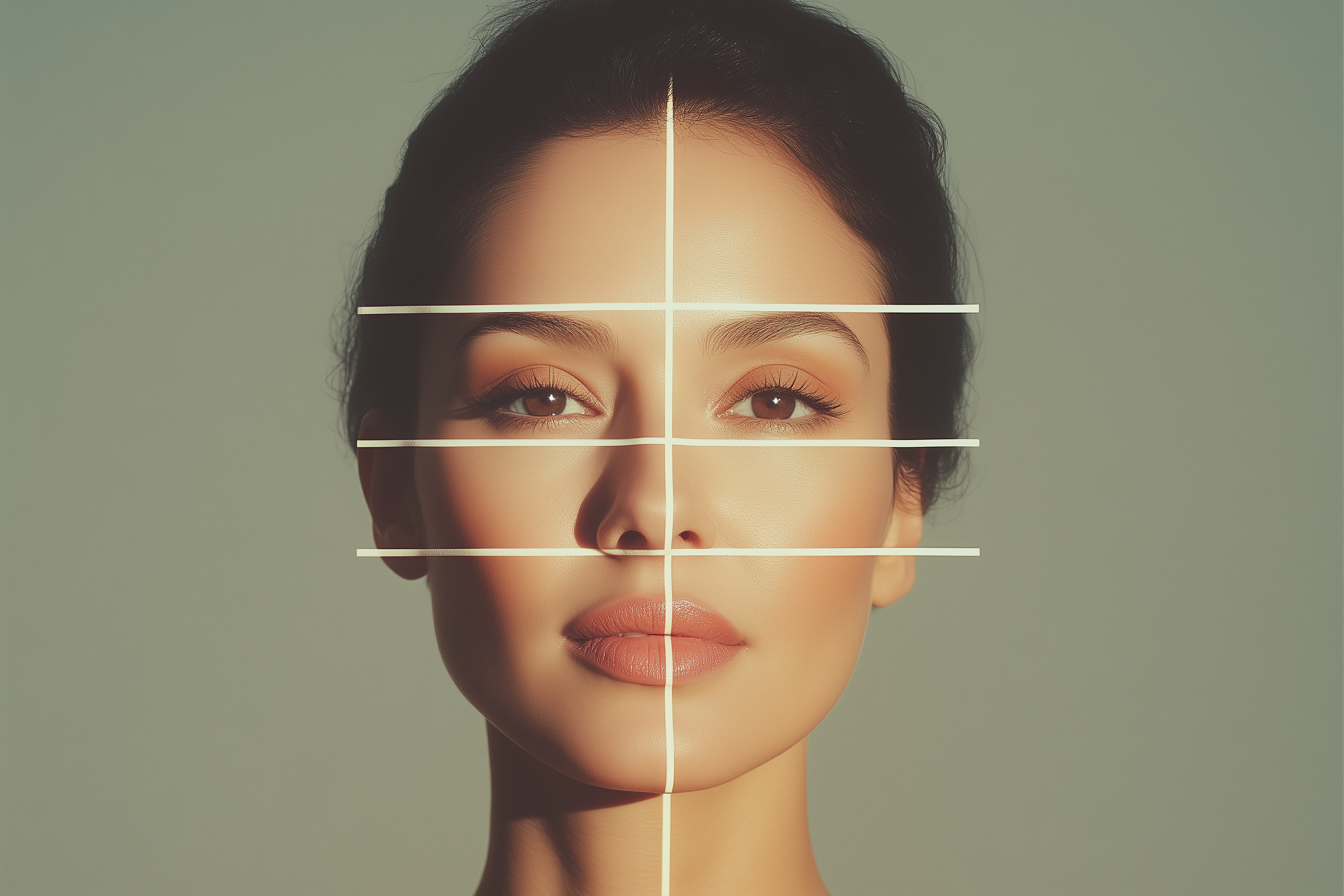Introduction
As a plastic surgeon, I frequently encounter patients who ask about the "perfect face" and whether their features conform to an ideal standard. One of the most persistent myths in beauty and aesthetics is the concept of the Golden Ratio-a mathematical proportion that supposedly governs facial attractiveness. While there is some truth to this idea, much of it is oversimplified or misrepresented. This essay explores the reality of facial proportions, the role of the Golden Ratio in aesthetics, and how modern plastic surgery balances art and science in creating harmonious features.
The Golden Ratio: A Brief Explanation
The Golden Ratio, or Phi (1.618), is a mathematical proportion that has fascinated scientists, artists, and architects for centuries. It is found in nature, from the spirals of galaxies to the patterns of flower petals. Leonardo da Vinci’s "Vitruvian Man" is often cited as an example of its application to human anatomy.
In facial aesthetics, some claim that a "perfect" face conforms to the Golden Ratio in various measurements, such as the width of the nose relative to the mouth or the distance between the eyes in proportion to facial width. Beauty standards across cultures often align with some of these proportions, leading to the belief that this ratio is a universal marker of attractiveness.
The Truth: The Role of Proportions in Facial Aesthetics
While mathematical ratios can help describe some patterns in facial harmony, they do not define beauty entirely. Several factors influence attractiveness, including symmetry, skin quality, cultural influences, and even personality.
Facial symmetry is often associated with beauty because it suggests genetic health and stability. However, no human face is perfectly symmetrical. In fact, minor asymmetries add character and uniqueness to a person’s appearance. Studies have shown that people may prefer slightly asymmetrical faces over perfectly symmetrical ones because they appear more natural and lifelike.
Beyond symmetry, facial proportions contribute to perceived attractiveness. The "rule of thirds" and "rule of fifths" are commonly used guidelines in aesthetic medicine. The face is often divided into three equal horizontal sections: the forehead to the eyebrows, the eyebrows to the bottom of the nose, and the nose to the chin. Similarly, a vertically well-proportioned face may be divided into five equal parts by the widths of the eyes and the space between them. These guidelines help surgeons assess balance and harmony but do not dictate a rigid standard of beauty.
The Lies: Misconceptions About the Golden Ratio
One of the biggest misconceptions about the Golden Ratio is that it is a strict template for facial beauty. While it is true that certain faces, famously those of Angelina Jolie or Brad Pitt, exhibit proportions close to Phi, many attractive individuals, such as Rosie Huntingdon-Whiteley and Ryan Gosling do not conform to these measurements.
Another misleading claim is that the Golden Ratio is an objective measure of attractiveness. Beauty is deeply subjective and influenced by cultural trends, personal experiences, and social conditioning. What one culture deems attractive may differ greatly from another. For example, high cheekbones and almond-shaped eyes are often idealized in Western aesthetics, while in some Asian cultures, a rounder face with softer features is considered more beautiful.
Furthermore, modern research has questioned whether the Golden Ratio truly plays a significant role in human perception of beauty. Studies suggest that while certain proportions are generally found to be more attractive, they do not strictly adhere to Phi. Beauty is far more complex than a single mathematical equation can capture.
The Practical Application in Plastic Surgery
As a plastic surgeon, my goal is not to create "Golden Ratio faces" but rather to enhance natural beauty while maintaining facial harmony. Every face is unique, and aesthetic procedures should complement an individual’s natural features rather than force them into a mathematical mould.
One of the key principles in facial aesthetics is balance. When performing procedures such as rhinoplasty (nose reshaping), facelift surgery, or injectables like Botox and fillers, I consider how changes will affect overall facial proportions. For example, a patient seeking a smaller nose may not realize that a slight adjustment to their chin projection could also improve their facial balance.
In non-surgical treatments, subtle refinements often yield the most natural results. Dermal fillers can enhance cheek volume, define the jawline, or correct minor asymmetries, but excessive use can lead to an unnatural, overfilled look. The best outcomes are achieved when interventions respect the patient’s unique anatomy rather than attempting to impose a universal standard of beauty.
The Psychological and Ethical Considerations
Plastic surgery is as much a psychological field as it is a medical one. Many patients seek cosmetic procedures due to societal pressures, self-esteem issues, or unrealistic expectations. While some degree of self-improvement is normal and healthy, the pursuit of perfection can lead to dissatisfaction and psychological distress.
Surgeons have a responsibility to educate patients about realistic outcomes and to encourage a healthy perspective on beauty. Rather than chasing an idealized version of perfection, the focus should be on enhancing individual features in a way that maintains natural expression and harmony.
Additionally, the rise of social media and beauty filters has distorted perceptions of what is "normal." Many patients bring in photos of heavily edited or AI-generated images, hoping to achieve an unrealistic look. Part of my role as a surgeon is to help patients distinguish between digital fantasy and attainable, natural results.
Conclusion: Beauty Beyond Numbers
The Golden Ratio is a fascinating mathematical concept, but it does not hold the key to human beauty. While certain proportions contribute to facial harmony, beauty is ultimately subjective and influenced by a wide array of factors, including symmetry, cultural preferences, and personal charisma.
Plastic surgery, when done ethically and skillfully, is not about forcing faces into a predefined formula. Instead, it is about enhancing natural features while preserving individuality and authenticity. The true art of aesthetic surgery lies in understanding and respecting the nuances of human beauty-something no single number can define.
For those considering cosmetic procedures, the best approach is to seek balance rather than perfection, and to choose enhancements that bring out the best version of themselves rather than chasing an unattainable mathematical ideal.



